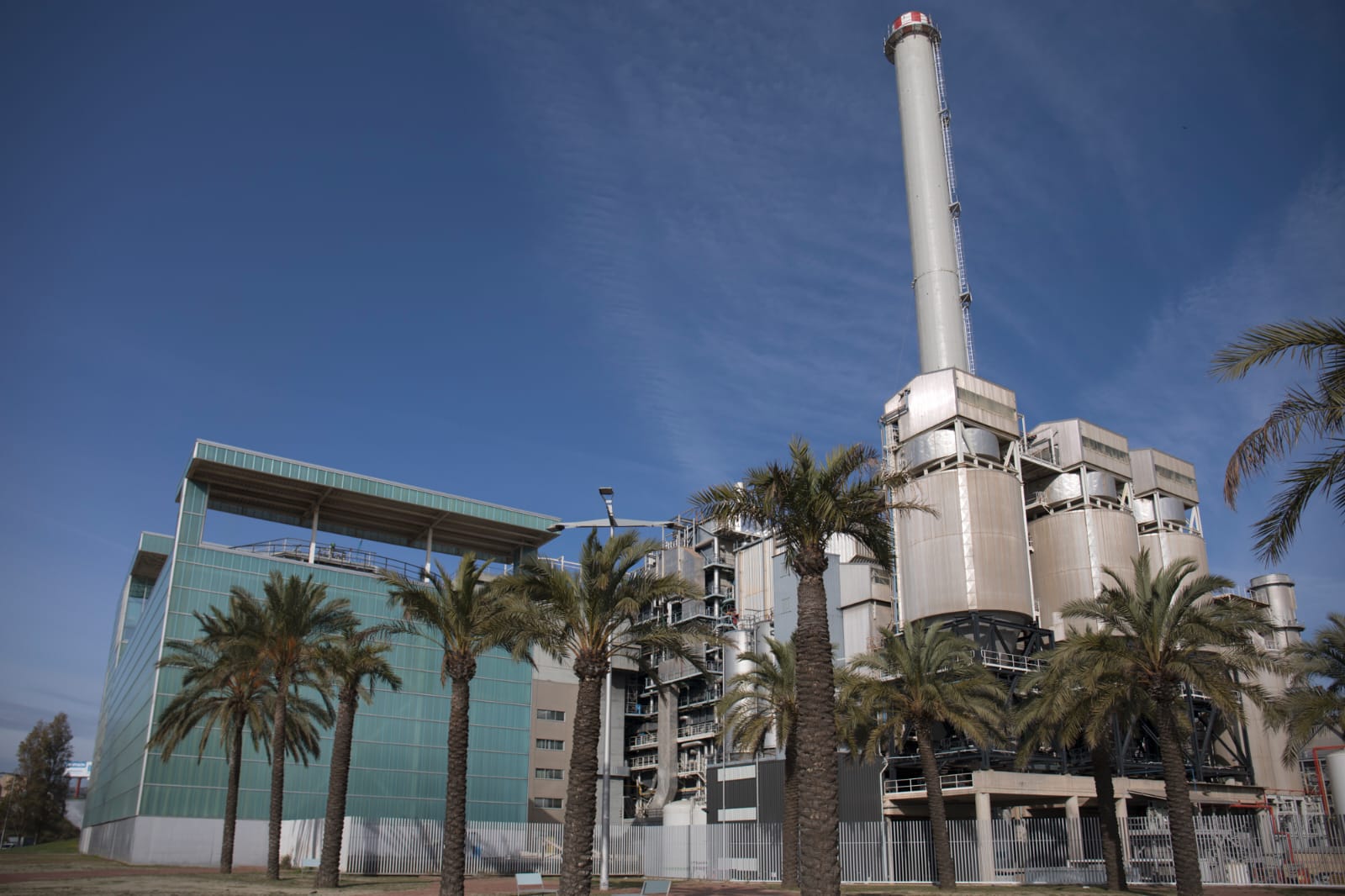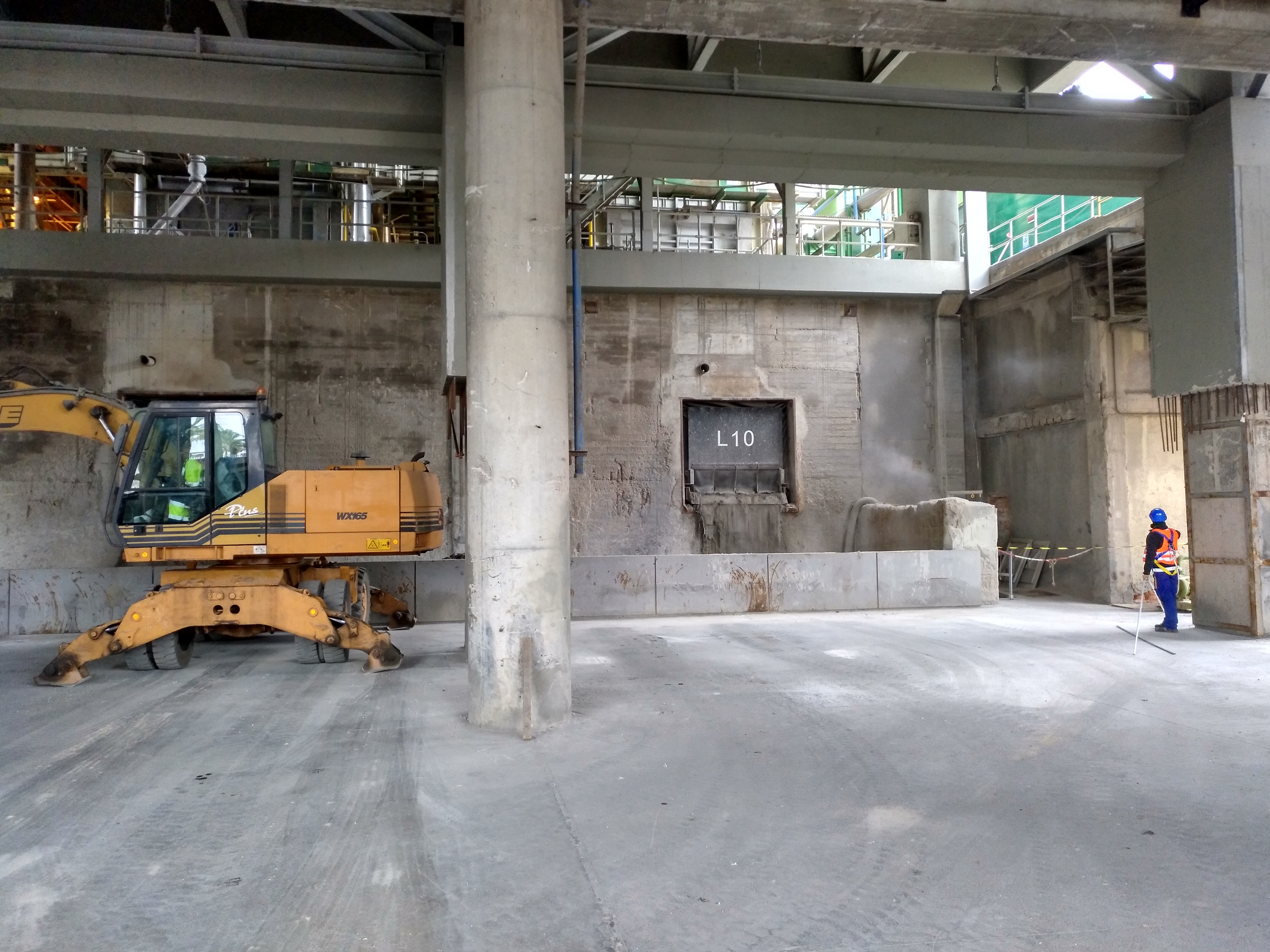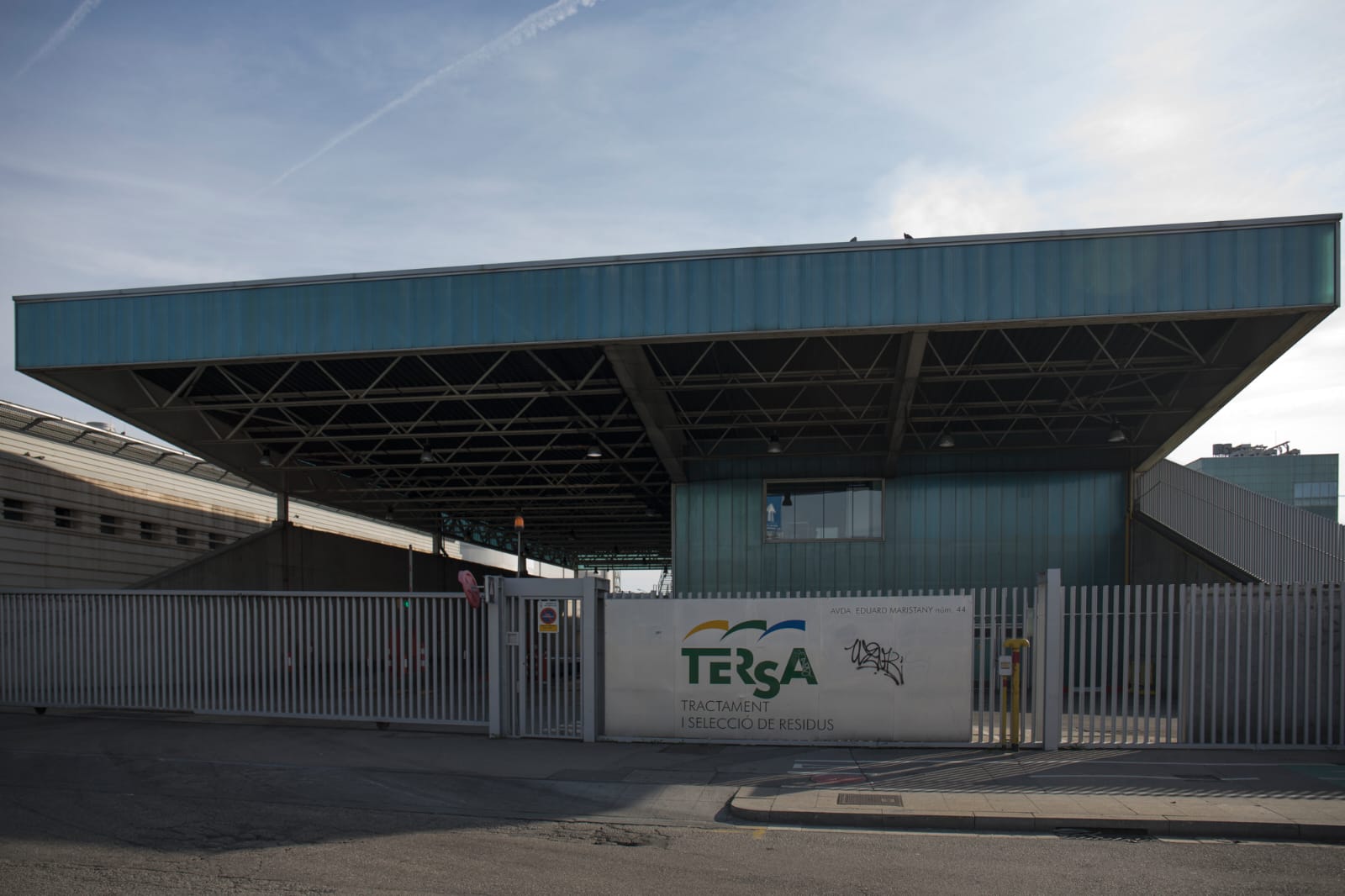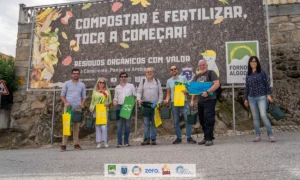A story of hidden emission: the case of Sant Adrià de Besós Incinerator.

Characteristics of the installation
The municipal waste incinerator located in Sant Adrià de Besós, close to Barcelona city limits and bordering the Mediterranean Sea, was inaugurated in 1975 and was developed as a public initiative (its current name is Waste Treatment and Separation Ltd, TERSA in its Spanish acronym). It was the first large incinerator of its kind built in Spain. It is the property of the Municipality of Barcelona (58.7%) and Barcelona Metropolitan Area (41.3%), a body that groups 36 municipalities around the city and covering a population of 3.2 million inhabitants distributed over 636km2.
It occupies a surface area of 23,000m2 in a densely populated area that contains residential buildings as well as services (schools, health centres, shopping areas, hotels, etc). The residential buildings are mostly luxury flats, whose residents have high requirements in terms of environmental quality, although at the time these flats were first built, this area was considered the metropolitan area’s ‘back yard’; with a marginalised population living in low-quality shacks (the Campo de la Bota neighbourhood) who were then displaced to other nearby neighbourhoods (‘La Mina’). Renovation of the seafront and the entire neighbourhood began to coincide with the 1992 Olympic Games and continued with the ‘Forum of Cultures’ in 2004. There are still several housing developments under construction in the area, like the Urban Framework Plan for the ‘Tres Chimeneas’ area.
The plant has an incineration capacity of 360,000 tonnes of municipal waste per year [i], equivalent to a quarter of all municipal waste generated in the metropolitan area, with three movable grate furnaces with water refrigeration, each with a capacity of 15 tonnes of waste/hour, and energy recovery for electricity generation using two steam turbines with a total electrical output of 23.7MW. Since 2003 it has also supplied heat energy, steam for heating and cooling systems, and hot water to hotels and residential buildings in the adjacent Forum area (DistriClima).
The original design was for the incineration of mixed municipal waste, with no prior treatment. Then in 2006 a Mechanical Biological Treatment (MBT) plant was built on the land next to the incinerator, with a treatment capacity of 192,000T. As a result of this development, in theory only the residual waste stream from the four MBT plants in Barcelona and surrounding areas (the so-called ‘Ecoparks’) would be incinerated, as those plants carry out the basic separation and recovery of by-products. The reality has been quite different, as we shall see.
The initial preventive and corrective measures were few and far between: electrofilters, reduction of sulphur oxides and not much else. Following the entry into force of Directive 2000/76/CE on the 4th of December 2000, the incinerator was forced to refit its installations, so that it now includes sleeve filters, a lime milk neutraliser for acidic gases and active carbon injection. Between 2008 and 2014 the plant was given a series of upgrades [ii], at a cost of over 30 million euros, to adapt to the new types of waste being incinerated, specifically, with higher calorific power, as it came from the residual waste fraction and unsorted municipal waste, which meant that more electrical energy and steam could be produced.
Now, in 2019, the non-catalytic reduction system for nitrous oxides is being replaced by a catalytic reduction system which is much more efficient, however this was only possible after the removal of the electrofilters as there was initially no physical space for this replacement [iii].
Types and quantities of waste incinerated
The plant has authorisation (Integrated Environmental Authorisation, IEA) to burn 6 types of waste:
Coming from waste treatment plants
- LER 191212 – residual waste from the mechanical-biological treatment of sorted municipal waste, and residue/refining of fuel
- LER 190503 – out-of-specification biostabilised compost
- LER 190604 – sludge from anaerobic digestion
With no prior treatment
- LER 200301 – mixed municipal waste
- LER 200303 – street cleaning waste
- LER 200307 – shredded voluminous waste (mostly furniture, mattresses, etc.)
According to their Management Reports, 363,261 tonnes entered the incinerator in 2016, 368,791 tonnes in 2017 and 358,010 tonnes in 2018, mostly with code 191212. As a result, in 2016 and 2017 the maximum authorised capacity was exceeded, in non-compliance with the IEA.
In 2018, 16.21% (56,000 tonnes) of the waste that entered the incinerator had received no prior treatment, and therefore had not passed through the MBT plants. It came from the mixed residual waste collected from street and pavement cleaning. A small proportion (2,102 tonnes from Ecopark 1) even came in sealed bin bags (in December 2018, in a study of waste coming from Ecopark 1 it was found that 17.7% of waste was delivered in sealed bin bags), that had not been opened at the MBT plant.
What should be underlined is that most of the waste, 85% of what was incinerated in 2018 was recyclable (organic matter, plastics, paper-cardboard, textiles, metal, glass). Incinerated waste contains a high percentage of organic matter stabilised in MBT plants, 67% of total waste being biomass. Furthermore, it contains a significant proportion (0.5%) of hazardous waste: electrical and electronic devices (WEEE), medicines, sanitary waste etc, which are not separated prior to incineration.
Emissions and infringements of limit values
According to the most recent data from the PRTR State Records [iv], in 2017 Waste Treatment and Separation Ltd (TERSA) emissions were as follows: 331,912 tonnes of CO2, 406 tonnes of NOx, 5.378 kg of Volatile Organic Compounds, 24.2 kg of chromium, 16 kg of nickel, 27.5 kg of lead, 16,7 kg of chlorine compounds, 10,482 kg of dust particles. An important array of dangerous polluting substances that affect the environment, the climate and human health.
Constant checks are performed on dioxins and furans, although oddly the checking system does not work while the furnaces are being ignited, or when they are being turned off, which is when dioxin emissions are higher, as there is unstable combustion [v]. These emissions are closely linked to the quantity of active carbon injected into the combustion gases before they move through the sleeve filters. The quantity used by TERSA is lower than the values recommended in the BREF document on BATs in December 2018 [vi]: a range of 0.5 – 2 kg of active carbon per tonne of waste incinerated, in order to achieve emission values below 0.06ng/Nm3.
For several weeks (from 18/07/17 to 23/08/17) the emissions value for dioxins and furans was 0.2 ng/Nm3, which is above the limit value of 0.1ng/Nm3, and at those times only 0.15 kg of active carbon was consumed per tonne of waste incinerated. Between 17/10/17 and 10/11/17 emissions value was 0.106ng/Nm3, slightly above the limit value.
In 2018, the limit values for injecting refrigeration water into the collector were exceeded, as well as for the DQO and AOX parameters [vii], likely due to an excessive use of chlorine as a biocide to avoid marine biomass entering, as the water used to cool down the system arrived directly from the sea.
Environmental impact, irregularities and residents’ complaints
There is a high level of concern among residents who live close to the plant regarding the potential risks of living close to the facility, especially as the area is already exposed to the impacts of other polluting infrastructure (thermal power plants, large waste water treatment plant, busy highways, etc). These concerns increased in 2017, after the release of several scientific studies showing worrying levels of dioxins and furans in the area [viii], which increased the risks of developing various diseases. As a result, the local association and activists came together to set up the Metropolitan Residents’ Coordination Group, ‘Airenet’ (‘clean air’) with the goal of controlling and reporting the environmental irregularities of the plants to local authorities.
These concerns increased when evidence emerged about plant irregular operations, particularly after a serious incident on 16th-17th July 2017, that led to the loss of control of the plant. Emissions values shot up and the plant shut down for several hours. This irregular operation was confirmed by several testimonies among TERSA workers.
1- Temperature T2seconds – According to European legislation [ix], after the final air injection, combustion gases should be at a temperature of over 850ºC for at least 2 seconds. However, internal measurements of this parameter from local residents, show that this temperature has been below 850ºC for several hours each year. This invokes concerns as to whether the algorithm used by TERSA to calculate this parameter is accurate.
2- Occasional emissions measurements taken by Government Agencies in different conditions to normal operating conditions – There is evidence to suggest that when measurements are taken by external agents, operating conditions are adjusted to ensure that the results remains under the legal limit values. In other words, operating conditions are rigged to obtain results that fall within legal values. For example, the consumption of natural gas is increased to increase the temperature of combustion gases, the flow of primary and secondary air is increased, a thick layer of dust is kept in the sleeve filter or the consumption of active carbon is increased, at the moment when external measurements are taken. This is all to reduce the values of the measured pollutants. An order was given to reduce the injection of active carbon once the external measurements by the Government Agencies had finished. Plant workers reported this issue to the Barcelona City Council’s Environmental Committee in 2011, without receiving any answers.It is important to underline that the volume of combustion gases, when external agencies are measuring the emission levels, is between 30 and 50% higher than volumes in normal operating conditions (270,000 Nm3/hour in some cases, compared to 200,000 Nm3/hour in the three furnaces). With the increased flow, the concentration of atmospheric pollutants decreased proportionately.
3- Incidents of 16th and 17th July 2017. During the night between the 16th and the 17th of July, the management of the plant lost control of its functions and emitted various pollutants (carbon monoxide and Total Organic Carbon), exceeding the legal limit values. Proving that combustion of waste was anomalous. The incident originated from a problem failure in the communication system linked to the plant’s operation control. Strangely, the continuous dioxin filter did not analyse emissions between 13th and 18th July. Emissions data continued to be sent to the Catalan regional government, despite the fact that the measuring equipment was disconnected. TERSA did not report this incident to the environmental authority, who ended up being informed about it by Airenet. TERSA has acknowledged that the incident lasted over 9 hours, during which the plant had to stop burning waste and completely shut down one furnace.
4- Igniting waste incineration furnaces. The law stipulates that furnaces should be ignited using auxiliary natural gas burners and never with waste, as during that time the temperature of combustion gases never reaches the required 850ºC. There is evidence that the plant’s management encouraged igniting the furnaces by burning waste, thereby breaking the law [vii]. It is clear that in those moments, the emissions of pollutants exceeded limit values. Until February 2018 the system that prevents waste from being burned if temperature T2seconds was below 850ºC was operated manually, and as such, depended on the operator who could choose to continue to burn waste, thereby breaking the law. From that date on, the system became automatic.
5- Unjustified increase in consumption of natural gas and active carbon following complaints. From March 2018 onward, consumption of natural gas and active carbon in the auxiliary incinerators increased significantly compared to consumption levels for 2017 (113% versus 75% respectively). TERSA tried to justify this increase by citing the removal of electrofilters, which increased the speed of the gases and decreased the T2seconds temperature, thereby increasing the set point temperature from 860ºC to 900ºC. However, the removal of the electrofilters happened in December 2017 and the increase in gas consumption took place in March-April 2018. During those months, gas consumption quadrupled. Everything would seem to indicate that this increase in consumption was due to pressure applied by local residents and a fear of exceeding emissions limit values.
6- Irregular unloading of toxic ash onto trucks. For a long time, the toxic ash collected from sleeve filters was removed from the two warehouses by trucks, which transported it to an external company. These removals were irregular, in that there was a break in the chain and dust particles were released into the environment. The telescopic sleeve hitched to the truck is not always adequate, as the trucks are different sizes to the loading bay. As a result, dust is released into an area that is open to the outside, and particles considered as hazardous waste are released into the environment.
Conclusions and recommendations
The commitment of the local community against the incinerator has given some positive results, as several complaints have led to making some operational improvements. However, there is still a long way to go, as the ultimate goal is to improve waste management in its entirety and close the polluting incineration plant. In the meantime, a request has been made to create a Citizens’ Observatory for the incinerator. This Observatory would have full access to the plant’s operating parameters while controlling its level of emissions. By beginning a tool of transparency, the Observatory would break the plant’s former culture of lack of communication.
There are still many areas for improvement, most of them are connected to the establishment of BATs, pending adoption of the conclusions currently in the process of approval by the European Commission. Furthermore, improvements must be made to the overall waste management system in the Metropolitan Area, implementing zero waste approaches to prevent and reduce waste at its source, while extending kerbside collection, particularly of the organic waste stream, from one neighborhood to the whole city. Ultimately, the priority should be to move away from the need for a plant that heat-destroys waste, which, rather than being recycled, is being turned into toxic gases and hazardous ash, requiring disposal in special landfills.
All facts and analysis provided in this article are supported by documentation. However, some information is kept confidential as it has been provided by the personnel working for Sant Adrià de Besós Incinerator plant. Zero Waste Europe is not responsible for the accuracy of the information provided either for decisions or actions taken on the basis of the content of this article.NOTE:
[i] Resolución of the 18th September 2007
[iii] The two years contract started in March 2019 for 17,5 million euros.
[iv] www.prtr-es.es/informes/fichacomplejo.aspx?Id_Complejo=4164
[v] Tejima et al., Characteristics of dioxin emissions at startup and shutdown of MSW incinerators, Chemosphere, Volume 66, Issue 6, January 2007, Pages 1123-1130
Li M, et al. PCDD/F emissions during startup and shutdown of a hazardous waste incinerator.Chemosphere. 2017. https://www.ncbi.nlm.nih.gov/m/pubmed/20619516/?i=2&from=/16860372/related
Reinmann, J. et al., Long-Term monitoring of PCDD/PCDF and other unintentionally produced from Europe. Science China Chemistry, may 2010, vol. 53, issue 5, pp 1017-1024.
[vi] eippcb.jrc.ec.europa.eu/reference/BREF/WI/WI_BREF_FD_Black_Watermark.pdf
[viii] Domingo et al., High cancer risks by exposure to PCDD/Fs in the neighborhood of an Integrated Waste Management Facility, Science of the Total Environment 607–608 (2017) 63–68.
[ix] EU Directive 2010/75/UE, 24/11/2010 on industrial emissions.
[x] During the night 16/07 /2017, the waste was burnt at two temperatures below 850 ° C, because the incinerator was working in manual mode resulting in the opening of a sanction file by the environmental authority (Direcció General de Qualitat Ambiental i Canvi Climàtic de la Generalitat de Catalunya).




